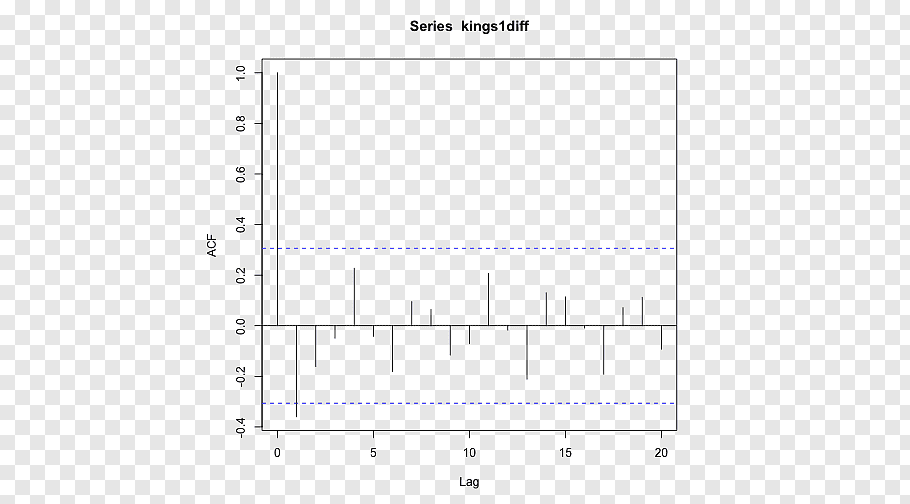Contents
But selling your losses earlier in the year could give you the chance to repurchase some of your investments later on when everyone else is selling their securities. Tax-loss harvesting is a method of using your investment losses to lower your taxes on capital gains. Basically, it shows the IRS that while you made money from some investments, you lost money from others. You don’t have to be a high-roller with a big portfolio to benefit from a portfolio harvest, either. Investors who don’t have investment gains to minimize can still use the losses to offset the taxes they pay on their ordinary income too. For tax-loss harvesting, the actual-cost method has the advantage of enabling you to designate specific, higher-cost shares to sell, thus increasing the amount of the realized loss.
Help your clients stay invested while potentially saving money on taxes. Second, the Internal Revenue Services, or IRS, has stipulations around netting gains and losses. Tax-loss harvesting can be fruitful but investors have to be careful. When there are no realised profits, or if realized losses are greater than the realized profits, there will be no tax-loss harvesting opportunity. This exercise lets the clients harvest the losses and save on taxes, hence called tax-loss harvesting.
ETFs trade like stocks, are subject to investment risk, fluctuate in market value and may trade at prices above or below the ETFs net asset value. All investments are subject to market risk, including the possible loss of principal. A tax-efficient approach to investing could cause a fund to underperform similar funds that do not make tax efficiency a primary focus.
This means that you can still benefit from harvesting losses if you don’t have capital gains to offset that same year; there is no expiration date on losses you carry forward to offset future gains or income. How to reduce your crypto tax billCrypto is treated as a capital asset, like property or stocks. You only realize a crypto capital gain or loss when you sell it, trade it, or spend it.
Gifting is another area where volatility can provide a tax advantage. Say, for example, you are interested in making a gift of stock to heirs but want to ensure the total, in dollars, doesn’t exceed your gift tax exemption. Temporarily depressed share prices could enable you to give more shares than you would if the price were elevated, while still staying under the exemption amount, Curtin notes. And, should the price rebound in your heirs’ possession, they could benefit from having received more shares and a larger gift.
What is the wash sale rule?
Merrill is not responsible for and does not endorse, guarantee or monitor content, availability, viewpoints, products or services that are offered or expressed on other websites. MLPF&S is a registered broker-dealer, registered investment adviser,Member SIPCand a wholly owned subsidiary of BofA Corp. But if you sold, and then bought back in at $8,000, you’ve “harvested” a $2,000 loss while theoretically earning the same return on your investment.
- Tax-loss harvesting is a strategy investors can use to reduce the total amount of capital gains taxes due from the sale of profitable investments.
- After working as a financial controller, he co-founded CryptoCPAs, which was acquired by TokenTax in 2018.
- As long as all that money remains within the tax force field those accounts provide, your investments can generate buckets of cash without Uncle Sam coming around asking for his take.
- In the real world, a tax loss harvester waiting 31 days to reinvest will see volatility in the investment.
- Gifting is another area where volatility can provide a tax advantage.
At year-end, if your capital losses exceed your gains (or if you don’t have any gains), your losses can offset up to $3,000 in non-investment income, even though that is often taxed at a higher rate than capital gains are. Losses greater than $3,000 carry forward and can be used to offset capital gains and ordinary income over your lifetime. While negative fixed income returns may have investors down, this challenge also what is castello coin presents an opportunity. Tax-loss harvesting — the act of selling a security in a taxable account at a loss and using the loss to offset realized taxable gains to help reduce taxes — can be a silver lining in this higher rate regime. If you are able to harvest short-term losses equal to $30,000, this harvested loss could be used to offset against short-term gains for tax bill savings of $8,340 ($30,000 x 27.8%).
In all scenarios, it is important to remember that tax-loss harvesting does not permanently eliminate the requirement to pay taxes on capital gains—it only postpones it. As soon as the taxable account is liquidated, taxes are due on any capital gains—and the tax rate of the liquidation date applies. A wash sale is a transaction involving the sale of one security and, within 30 days , purchasing a “substantially identical” stock or security, either directly or indirectly via a derivatives contract such as a call option. If a transaction is considered a wash-sale, it cannot be used to offset capital gains. Moreover, if wash sale rules are abused, regulators can impose fines or restrict the individual’s trading.
All About Tax-Loss Harvesting for Investors
This material is provided for educational purposes only and does not constitute investment advice. The information contained herein is based on current tax laws, which may change in the future. BlackRock cannot be held responsible for any direct or incidental loss resulting from https://cryptolisting.org/ applying any of the information provided in this publication or from any other source mentioned. The information provided in this material does not constitute any specific legal, tax or accounting advice. Please consult with qualified professionals for this type of advice.

Tax-loss harvesting helps everyday investors reduce taxes by offsetting the amount they have to claim as capital gains or income. Basically, you “harvest” investments to sell at a loss, then use that loss to lower or even eliminate the taxes you have to pay on gains you made during the year. While investors can benefit from harvesting losses any time, down markets may offer even greater opportunities to realize losses and use sale proceeds to purchase other securities at bargain prices.
Should I tax loss harvest before or after a distribution?
The volatility seen in the first few months of 2022 is a good example. This is now three years in a row we have seen such volatility in the first few months of the year. The January dip and February swoon could have been an ideal time to tax-loss harvest. As an advisor, you also need a systematic process to understand which clients may benefit. In other words—on average—waiting until November and December to perform tax-loss harvesting may be limiting investors to two of the worst months to harvest losses. From a calendar planning perspective, it does make it easier for many investors to schedule tax-loss harvesting for the end of the year.

While not always possible, tax-aware investing should be a priority to receive more favorable tax treatment and enhance returns over time. Generally, tax-loss harvesting should be done when opportunities present themselves – which could be at any time during the year. However, some investors may find it helpful to wait until the end of the year because they’ll have a better understanding of their portfolio’s performance and potential tax implications at that point. As we enter the final months of a year where stock swings dominated the headlines, now is the time to consider how this strategy may benefit you.
Then, she could use the proceeds to buy shares of ZYY stock after determining that it’s as good as or better than XYZ, given her overall investment goals and objectives. We recommend developing a tax-loss harvesting strategy with your crypto tax advisor to most effectively minimize your tax burden. It’s entirely legal to harvest your losses at the end of the year. However, if you buy back your assets immediately, this could constitute a crypto wash sale. However, if you sell the tax lot acquired at $10,000, you will increase your capital gains total by $4,000 to $24,000. BTC is now trading at $8,000, so you have a $2,000 unrealized loss and a $4,000 unrealized gain.
To understand tax-loss harvesting, you first need to remember how capital gains taxes work. Unless you purchased your entire position in a stock, mutual fund or ETF at a single time, the price that you paid for the investment varied. Good records of every purchase are required in order to come up with the proper cost basis to report to the IRS.
What are long-term and short-term capital gains?
Funds with negative price returns are potential opportunities for tax-loss harvesting. When you upload a portfolio to BlackRock’s Tax Evaluator, the tool will highlight funds with negative price returns – helping you identify where there are potential losses. That is, your long-term capital losses first offset long-term capital gains, while short-term losses first offset short-term gains.
If you also sell the industrial stocks that have declined in value, you could use those losses to offset the capital gains from selling the tech stocks, thereby reducing your tax liability. However, if you have overall capital losses, there is a limit to the losses you can use to offset ordinary income on your federal taxes. One risk is due to the fact that tax-loss harvesting lowers the cost basis of the asset. A capital gain is generated when the sale price of an asset is higher than the cost basis of that asset .
Information that you input is not stored or reviewed for any purpose other than to provide search results. Responses provided by the virtual assistant are to help you navigate Fidelity.com and, as with any Internet search engine, you should review the results carefully. Fidelity does not guarantee accuracy of results or suitability of information provided. But there are some important details to know as you see how tax-loss harvesting might help lower your tax bill. Julia Kagan has written about personal finance for more than 25 years and for Investopedia since 2014.
How much can be tax-loss harvested in a year?
The opinions expressed are the author’s alone and have not been provided, approved, or otherwise endorsed by our partners. Virtual Assistant is Fidelity’s automated natural language search engine to help you find information on the Fidelity.com site. As with any search engine, we ask that you not input personal or account information.
For more on this subject, read our Intro to NFT Tax Loss Harvesting. If you don’t sell the ETH you will have $5,000 of taxable gains. The views expressed in this material are the views of Matthew Bartolini through the period ended February 11, 2022, and are subject to change based on market and other conditions. This document contains certain statements that may be deemed forward-looking statements. Please note that any such statements are not guarantees of any future performance and actual results or developments may differ materially from those projected.
You could then apply the remaining $2,000 of your capital loss from Investment B ($5,000 – $3,000) to gains or income the following tax year. Crypto tax-loss harvesting is a strategy in which investors sell assets at a loss during market dips or at the end of the tax year to offset other capital gains, lowering their total tax liability. In taxable accounts, when you sell a position that has lost value, you can use the loss to offset capital gains that result from selling securities at a profit during the year. Your booked losses can also offset funds’ annual capital gain distributions. Long-term capital gains are taxed at special rates that can be lower than what you would otherwise pay for your ordinary income – 0, 15, and 20 percent, depending on your income. These rates apply to assets that you’ve held for more than one year.